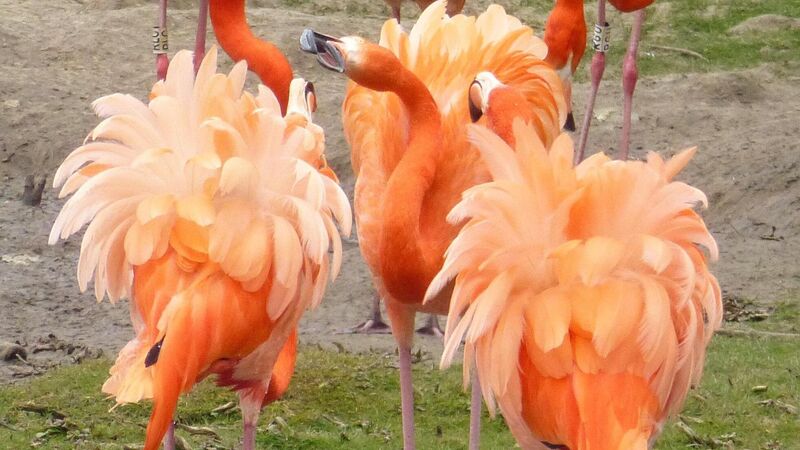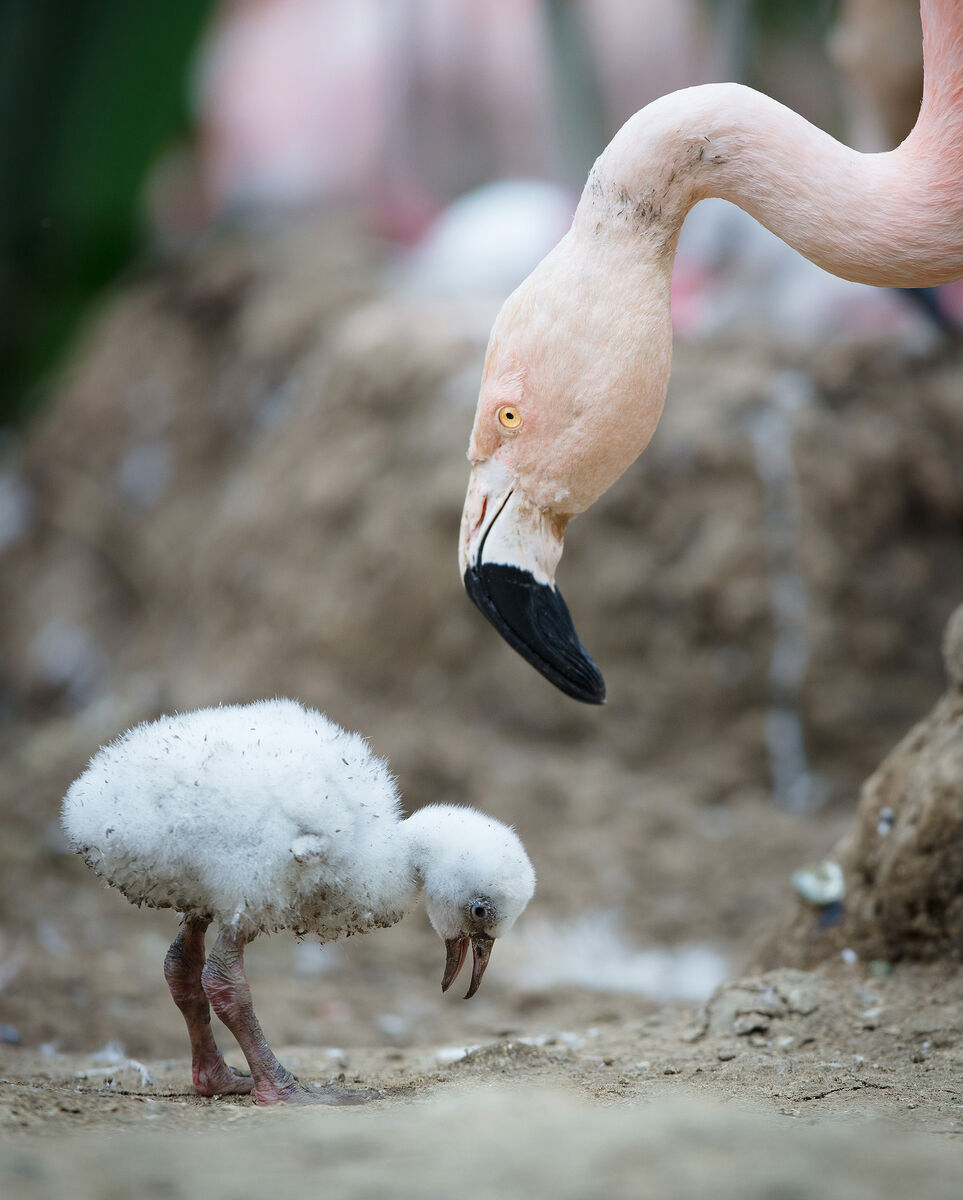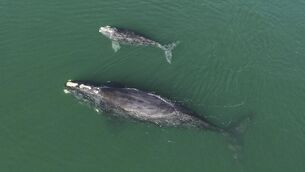Flamingo personalities analysed and 'birds of a feather' really do flock together

Two Caribbean flamingos ganging up on another bird. A new study suggests the birds form cliques of like-minded individuals and tend to spend time with others whose personality is similar to their own. The study revealed the complex nature of flamingo societies and could help in the management of captive flocks. Picture: Paul Rose/WWT/PA Wire
Carl Jung believed that people tend to be either ‘introverts’ or ‘extroverts’ — although few of us are exclusively one or the other.
Fionnuala McCully and Paul Rose of Exeter University claim that flamingos have a similar trait: some are outgoing and adventurous, while others remain cautious and retiring. Also, a flamingo likes to be with like-minded friends. ’Aithníonn ciaróg ciaróg eile’ is the rule or, as Rose says on the University website, ‘birds of a feather flock together’.
‘Flamingo’ comes from ‘flame'. These pink marsh-birds flash glorious crimson coverts when spreading their wings. Tall graceful creatures, resembling skinny Giacometti sculptures, they are much loved by artists and film-makers. The smooth motion of a great flock, walking corps-de-ballet style in slow-motion elegance, is unforgettable. The 'knees', which are actually ankles, bend forwards rather than backwards.
1/4 🦩 Flamingos of a feather, flock together! 🦩
— Fionnuala McCully (@FR_McCully) March 1, 2023
Captive Caribbean and Chilean flamingos have ‘friends’ who behave similarly to themselves.
Out today #openaccess with @pauledwardrose in @SciReports @CrabExeter @WWTSlimbridge
Read the paper here 👉 https://t.co/zOA93S1RaU pic.twitter.com/NlvaRajiRv
‘Flame birds’ frequent salty lagoons in sub-tropical regions, where they feed on tiny creepy crawlies in the organic ooze. The water may be so salty that few creatures can live in it. Those that manage to do so have so few competitors that they become extremely abundant. It is on these that flamingos feed. With head held upside down, the bill becomes a pump, the tongue acting as a piston. Water is drawn into it and pushed out sieve-like, trapping brine shrimps and plankton like a whale's baleen.
Flamingos breed colonially, the eggs being laid in nests of dried mud resembling tiny volcanos. Parents, of both sexes, produce milk which their chicks drink directly from the crop, an adaptation shared only by pigeons. Youngsters form into crèches — many thousands have been recorded in some African ones. The adults, somehow, manage to find and feed their own offspring amongst the multitude.

We used to think that flamingos were relatively simple souls. The brain, positioned at the end of such a long neck, may be difficult to supply with blood, so it’s small and light. This suggests that these exotic birds are socially unsophisticated. According to the Exeter researchers, however, this isn’t the case; the behaviour is very complex. It was assumed, for example, that, once paired, partners lived in lifelong connubial bliss but, in fact, flamingo love-life seems almost as stormy as our own.
The Wildfowl and Wetlands Trust maintains colonies of the Caribbean and Chilean species at Slimbridge in Gloucestershire and it is there that McCully and Rose carried out their research. They determined the ‘personalities’ of individuals within the flocks and tracked their habits, haunts, and interactions.
Some individuals were of an adventurous disposition, always eager to examine anything novel in their surroundings. For others, ‘discretion was the better part of valour’. Not that the researchers dismissed these shy birds as spineless wimps. Their cautious approach to life, like that of human introverts, may be just as successful in the long run. As in all crowded situations, avian or human, rows erupt from time to time. Being with like-minded individuals offers support in times of stress. The benefits of social grouping proved to be more apparent among the Caribbean species than among the Chileans.







